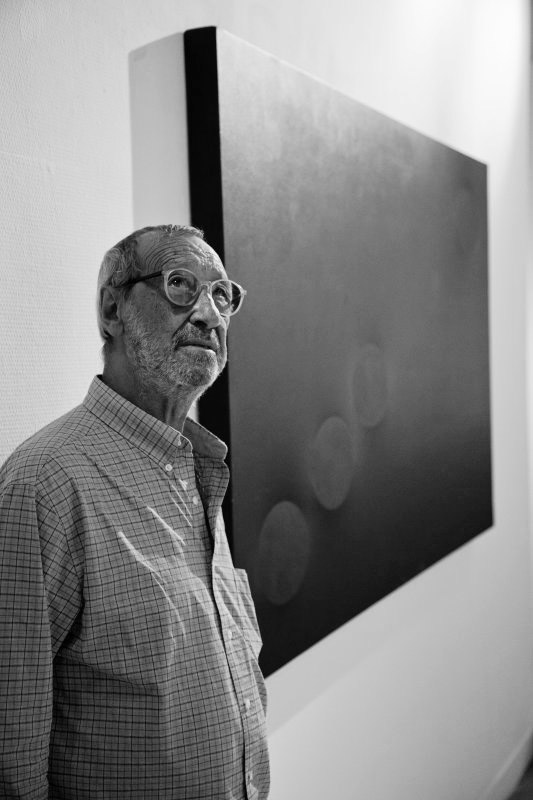Simeti, Turi

Turi Simeti was a pioneer within the Italian modern art scene of the latter half of the 20th century, renowned for his distinctive monochromatic paintings with oval figures.
He was born in Alcamo, Sicily in 1929. In 1958 he moved to Rome, where he taught himself how to paint, creating informalist works. During this time, he also spent long periods in London, Paris and Basel, cities that influenced his artistic identity in the following years.
In 1962, he incorporated for the first time his famous oval figures and in 1965 he joined the group Zero, led by Lucio Fontana in Milan. This movement was founded in Germany in 1950 by Heinz Mack, Otto Piene and Günther Uecker, even though it soon expanded to various countries, including Italy. Its aim was to move beyond the subjective figuration characteristic of the postwar era, focusing instead on the interplay between light and space within the canvas.
This idea is clearly reflected in Simeti’s work. His three-dimensional oval figures are born from the canvas itself, while complemented by monochromatic tones, creating a discourse centered around the concepts of light and movement. Like the artist himself said, “the oval figures are sweet, they are a point of excitement on the surface that comes to life and thickness thanks to the light. Light is as important in my work as shadow”.
From 1966 to 1969 he worked in New York as a resident artist at Fairleigh Dichinson University. When he returned to Italy he officially moved to Milan, although he spent the winters in Rio de Janeiro. Until his passing in 2021, he exhibited in various national and international museums and fairs, including Giraldi in Livorno, Bochum Loehr in Frankfurt, the Guggenheim Museum in New York, and the Peggy Guggenheim Collection in Venice.
Nowadays Simeti’s works can be found in some of the most important collections in the world, such as Fondazione Prada in Milan, Gallerie Nazionale de Arte Moderna in Rome, Kunsten Museum of Modern Art in Copenhagen, or Museu de Arte Moderna in Rio de Janeiro.